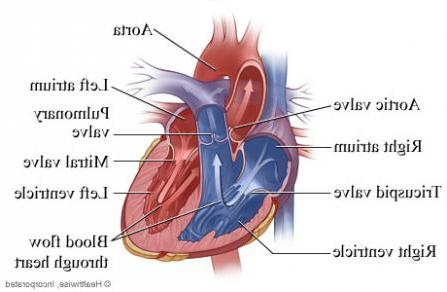When is surgical repair of a congenital heart defect advisable?
How is repair of a congenital heart defect accomplished?
What are the risks and benefits of such surgery?
What is involved in a typical recovery?
When is surgical repair of a congenital heart defect advisable?
There are many different kinds of 先天性心脏缺陷—that is, abnormalities in the heart's structure present since birth. They vary significantly in their frequency and complexity, as well as in when symptoms first occur and how severe the symptoms are.
Very serious 先天性心脏缺陷 must be treated in infancy, but some defects don't become a problem until many years later; or sometimes, a repair made in infancy requires re-repair in adulthood. 我们提供在婴儿期或儿童期手术的先天性缺陷的成人再修复, 以及修复先天性缺陷直到成年后才显现出来.
你的外科医生会评估你的具体情况,并帮助你权衡手术的风险与药物治疗和其他非手术治疗的风险. 手术修复的可取性是高度可变的,完全取决于每个个体的情况. 然而,未经治疗的先天缺陷,已经开始引起的症状往往可能导致 充血性心力衰竭.
Should you and your surgeon decide the time is right for surgery, 请记住,我们在先天性心脏缺陷的手术修复方面提供卓越的专业知识, 作为团队中的一名外科医生,他在成人先天性心脏缺陷的修复方面接受过全面的培训,并有超过20年的进行此类修复的经验.
How is repair of a congenital heart defect accomplished?
There are almost as many ways to repair 先天性心脏缺陷 因为有这样的缺陷. 在某些情况下, 然而, 成年期先天性缺陷的修复或再修复与心脏同一部位获得性疾病的修复相似. 你的外科医生会向你详细解释修复的具体过程.
Congenital heart defects are typically repaired via open surgery. 然而,在某些情况下,这种手术可以使用微创技术来完成. The appropriate approach depends on many factors, from the specifics of your defect to the overall state of your health. These are the primary options; your surgeon will determine which one is best in your particular situation:
- 开胸手术 involves making a 7- to 10-inch incision over the middle of the sternum, 或胸骨, then dividing the sternum to allow access to the heart. 在某些情况下,可能采用侵入性较小的选择,包括稍小的胸骨切口. Then the congenital defect is repaired or re-repaired.
It will be necessary to stop your heart from beating during the procedure, so the operation can be performed on a motionless and bloodless field; while your heart is stopped, 一种被称为心肺旁路机的设备将接管你的心脏功能并维持血液循环. 偶尔, during complex operations involving the aorta, you may also be put into a state known as hypothermic circulatory arrest; this involves lowering your body temperature to significantly slow your body's cellular activity, permitting your blood flow to be temporarily stopped. (The term "hypothermic" comes from Greek words meaning "low heat," while "circulatory arrest" means your circulation is arrested, 或停止.)在其他情况下, 一种被称为腋窝插管(或插入引流管)的技术, 被称为套管, in an artery in your armpit, or axilla) can allow aortic replacement to be performed without hypothermic circulatory arrest; this advance may reduce the incidence of postoperative strokes and neurological deficits.
- Minimally invasive surgery 包括在你的胸部侧面做一个或两个小得多的切口(通常是2到4英寸), 在你的肋骨之间. Then the repair is performed by inserting an X-ray camera and long, 薄的手术器械到先天性缺陷的位置. 微创手术也需要使用心肺搭桥机. In circumstances when it is appropriate, this approach avoids the need to split the sternum and open the entire chest, 因此,复苏可能会更快.
What are the risks and benefits of such surgery?
重要的是要记住,每一个医疗选择都涉及风险和收益之间的权衡——无论是接受手术, 服药, 或者甚至只是仔细监控一种情况(一种被称为“观察等待”的选择)。.
In the case of the repair or re-repair of a congenital heart defect, 决定手术是否明智,需要权衡任何心脏手术所涉及的风险,以及药物和其他非手术治疗可能导致心脏和循环系统进行性损害的风险.
The risks involved in surgery are typically fairly low; your surgeon will be able to explain the likelihood of complications given the particulars of your situation, including your age and the overall state of your health. 然而,一般来说,心脏手术的死亡率或死亡风险相当低. 心脏手术也与引起严重中风的血栓的小风险有关. 而且任何外科手术都有很小的并发症风险,比如感染.
吸烟的患者如果在手术前至少2至4周戒烟(最好不要在心脏手术前立即戒烟),可以降低并发症的风险, 然而, because when people stop smoking they often have short-term bronchorrhea, or excess secretions in their respiratory tract, 这让他们经常咳嗽——当你刚做过心脏手术时,经常咳嗽不是一个好主意。).
The benefits of successful surgery are usually considerable; your surgeon will be able to explain the likely outcome in your case.
What is involved in a typical recovery?
A typical open-heart procedure takes from 4 to 6 hours, in some cases up to 8 hours; patients are then maintained under general anesthesia for an additional 4 to 6 hours. If their heart is performing well and there is no excess bleeding, they can emerge from anesthesia and have their breathing tube removed. Most patients stay in the ICU until midday of the day after their procedure; if they continue to do well, 然后可以移除胸腔中的引流管,当天晚些时候可以将他们转移到普通的医院病床上.
The typical hospital stay ranges from 4 to 7 days. 在这一点上, the vast majority of patients are able to go home, with support from the visiting nurse service, 虽然大约15%到20%的人可能需要在康复机构花一些时间进行更广泛的康复. 出院后, 建议患者在三周内不要开车,在六周内不要举起超过5磅的东西. Beyond that point, they can resume whatever activities they wish to.
病人 tend to be surprised at how easy it is to control their pain. By the second day after their operation, most patients are comfortable without intravenous pain medication, taking only oral painkillers, and the overwhelming majority are discharged home on just Tylenol or Motrin.
In cases when minimally invasive surgery is appropriate, 手术时间和恢复期通常都较短.
Page reviewed on: Jun 26, 2018
Page reviewed by: Jock McCullough, MD
